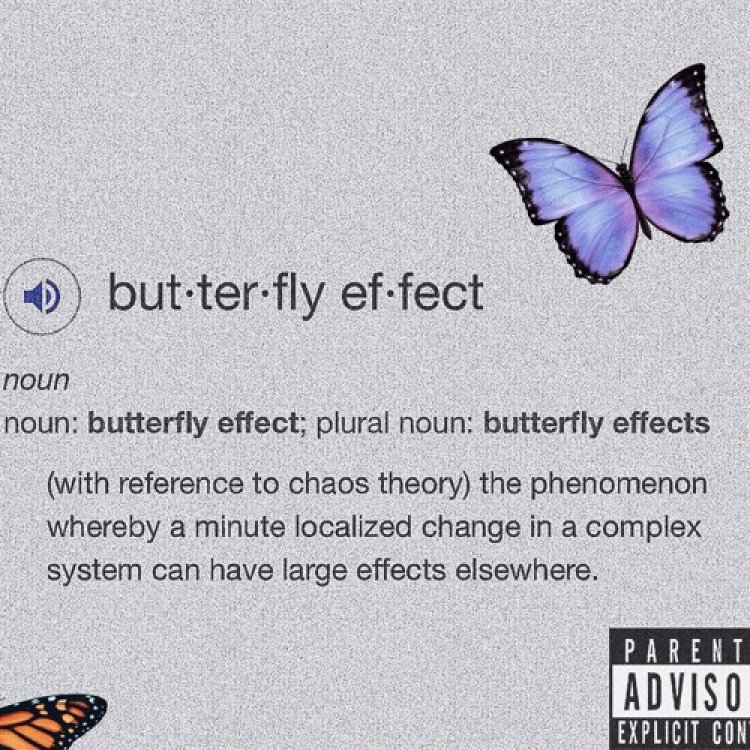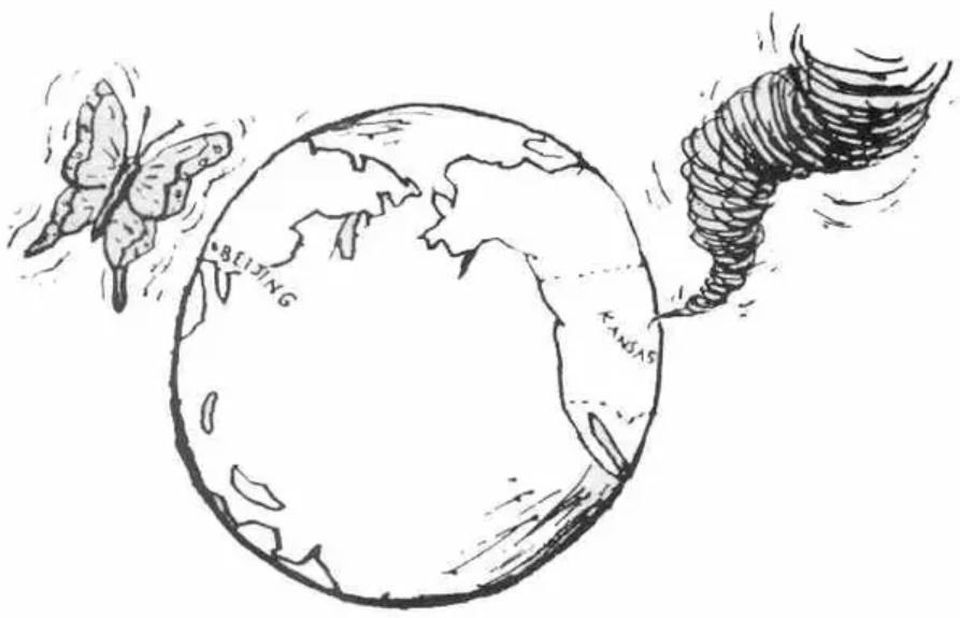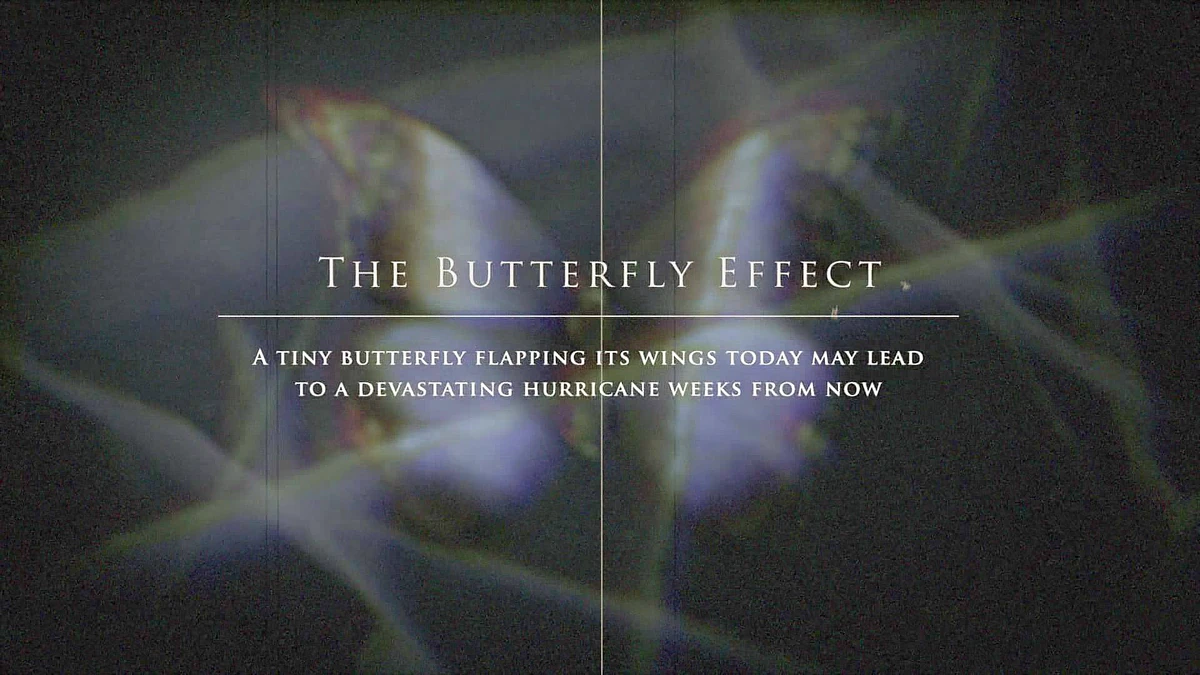By Rania Tsoli,
Over the years, I have started coming to the realization that the seemingly small things in life often prove to be vastly bigger than what they might appear to be at first glance. Even the simplest of decisions or changes made in mere seconds can sometimes make a far greater impact than what one might think. The phenomenon being described is commonly known in pop culture as the butterfly effect, and it can be thought of as a spectrum with many sides to observe from. However, you might be surprised, since the effect’s original meaning is in a way different than what many of us might know it as. For us to be able to properly absorb the butterfly effect and its echo throughout history and up until today, let us first get more familiar with its definition and origins.
The term “butterfly effect” was first introduced by a meteorology professor at the Massachusetts Institute of Technology, named Edward Norton Lorenz. While studying weather patterns, he designed a model that demonstrated that if you compare two starting points that are near each other and indicate current weather, they will soon drift apart. Later on, one area could appear to be tranquil, without so much as a light drizzle, whereas the other could wind up with severe storms. Lorenz’s main point was that there are innumerable interconnections in nature, and, should someone make the tiniest of perturbations to the world as we know it, there would be no way for us to know what would have happened if there had been no disturbance.
To describe his theory, he called it “sensitive dependence on initial conditions”, when his work was first introduced to the public in 1963, and later used the metaphorical example of the details of a tornado – such as the exact time that it was formed and the path that it followed – being influenced by minor alterations in nature’s state, such as a distant butterfly flapping its wings several weeks earlier, hence the phenomenon’s name. Lorenz originally described the phenomenon by using the example of a seagull causing a storm, but was eventually persuaded by a number of his colleagues to use the more poetic example of a butterfly’s wings causing a tornado by 1972.

In pop culture, the butterfly effect has been adopted by many as a way to describe and emphasize the significance of minute occurrences in our lives, which may not be entirely wrong, but is not entirely right either. Specifically, while a great number of people know the butterfly effect to mean that tiny changes can have bigger consequences and think of us as able to track this progression in order to see what alteration caused what result, Lorenz’s original theory was actually trying to say that we cannot, in fact, track each and every one of these disturbances and know what each of them caused. There is not really a way for us to know what would have happened had there been a small change in nature’s state – or, to furthermore apply the butterfly effect in our everyday lives, had we made a different decision, be it a simple or complicated one – nor can we always see exactly which alteration caused an outcome to turn out one way or another.
The purpose of the provocative question Lorenz posed was to illustrate the idea that some complex dynamical systems exhibit unpredictable behaviors such as small variances in the initial conditions, which could all have vastly diverse effects on the system’s outcomes. As we are starting to grasp, these systems are incredibly sensitive, and because of said sensitivity, most – if not all – outcomes are unpredictable. This idea became the basis for a branch of mathematics known as chaos theory, and since its introduction, it has been applied in numerous scenarios.
Besides its initial connection with weather predictions, the butterfly effect has repeatedly made its appearance in psychology and history, leaving us with various examples to choose from in order to be able to properly absorb the way the phenomenon works. Starting with psychology and the complexity of how the mind works, a tiny change in neurotransmitters can have a great impact on one’s cognitive system; it is often impossible to tell exactly what would have caused someone to act, think, or feel differently. Using the butterfly effect in order to dynamically approach the process of human development – including neural, mental, behavioral, and social systems interacting with each other over the course of one’s life – emphasizes the true complexity of the said process.

Small changes in certain parameters can end up having an enormous impact on someone’s actions, behavior, and attitude, which would once be described as predictable, stable, and consistent. As the butterfly effect suggests, it is next to impossible to always know what minute alteration caused a certain change in one’s behavior or what one’s thoughts, feelings, and attitude would have looked like, had a different path of choices been taken.
The butterfly effect is very much present when it comes to historical events as well. Starting off with the shaping of one of the most widely known dictators of modern history, a young Adolf Hitler applied to be an art student at the Academy of Fine Arts in Vienna, but was rejected not once, but twice: his rejections in 1907 and 1908 are thought to represent the butterfly effect, and how we have no idea as to where the world would stand today, had Hitler become an artist painting idyllic landscapes, and not the corrupt dictator responsible for the Holocaust.
Another example of the butterfly effect in history would be the bombing of Nagasaki. The United States initially intended to bomb the Japanese city of Kuroko, targeting its munitions factory. On the day the attack was planned to take place, the cloudy weather prevented military personnel from having a clear view of the factory as they flew overhead. After passing over the city three times and failing to see it, the pilots gave up. The citizens prepared for their doom as they heard the airplane above them; but the nuclear bomb was never dropped on Kuroko. The military decided to target the city of Nagasaki instead, due to improved visibility, and at that moment, when this split-second decision was taken, the fate of myriads of people changed. There is no way for us to comprehend just how different the rest of our world’s history up until today would have played out, had that day not been cloudy.

The butterfly effect is an exceedingly interesting concept, the essence of which is somewhat difficult to properly grasp without taking some time to think it over. What we can take from this compelling phenomenon is that while we can be mindful of our initial conditions and strive to create the most proper environment to achieve our goals, life is naturally chaotic: even the smallest of alterations in our reality can have a truly massive impact on the outcome. Our current advancement in science can only bring us so far in predicting how the future will play out; only by embracing the chaotic nature of our existence can we thrive in the entangled webs of our choices and their countless possible upshots.
References
- What Is the Butterfly Effect and How Do We Misunderstand It?, science.howstuffworks.com, Available here
- The butterfly effect: the impact of deterministic chaos on our lives, nesslabs.com, Available here
- The Butterfly Effect: Everything You Need to Know About This Powerful Mental Model, fs.blog, Available here




